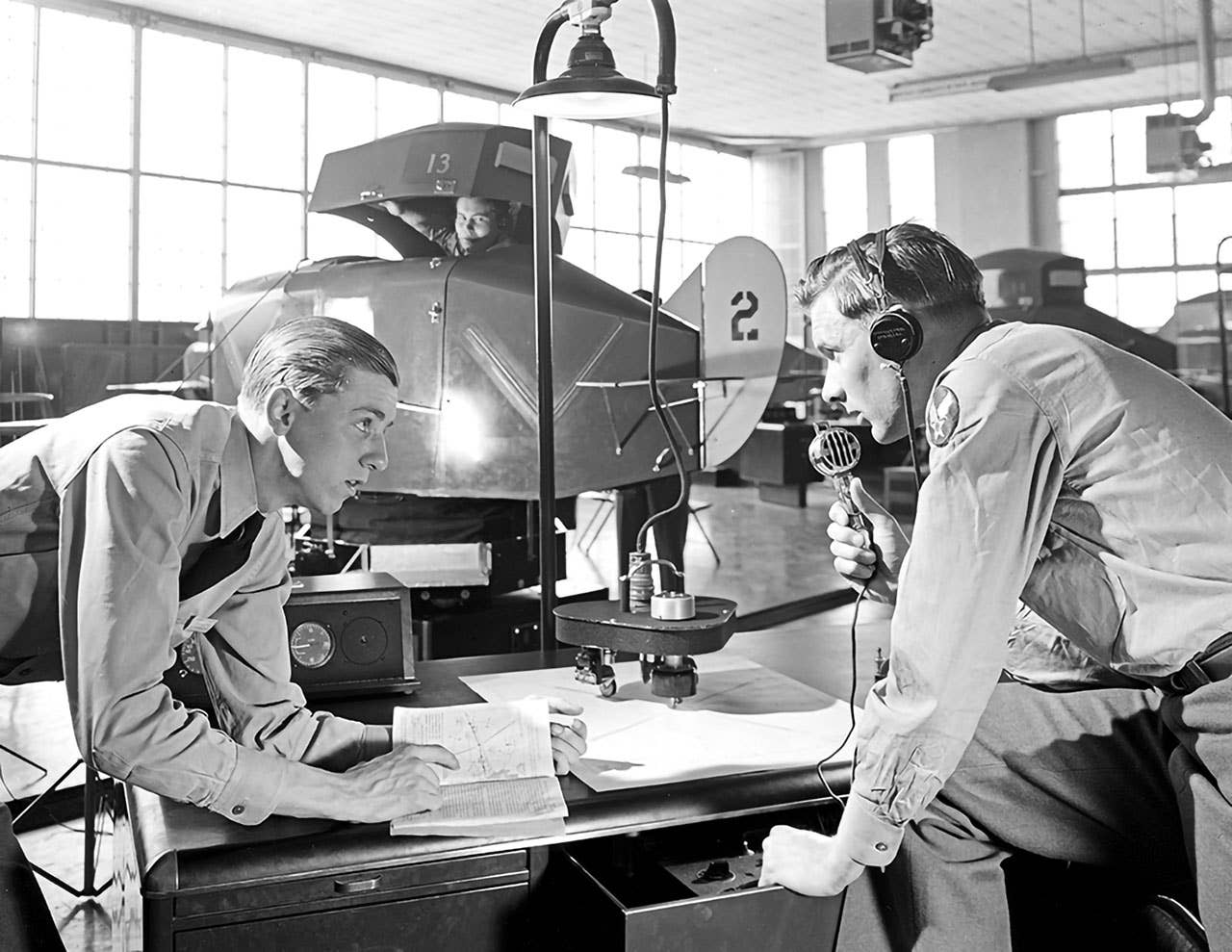Flight Simulators: Valuable Teaching Tools For Pilots
They’re not real airplanes, but in some ways, they’re better.

A Link trainer in the background, with a curious student peeking out the hatch awaiting further challenges from his instructors. Photo By Wikimedia Public Domain
Climbing into the pilot seat of an aircraft and powering it into the sky is an incredible experience, and, thanks to modern technology, it's now one that can be simulated almost as realistically from the ground as from within an actual aircraft. Made out of real aircraft parts, today's simulators contain exact cockpit replicas as well as vivid, three-dimensional visual displays of terrain, buildings and other structures. Adding to the realness factor is the simulation of live, real-time weather and traffic conditions and the ability for users to communicate with air traffic control. Even non-pilots can join in the fun these days using at-home computer programs, such as Microsoft Flight Simulator.
But their popularity isn't just due to the coolness factor. Since their early days, nearly 100 years ago, flight simulators have been used as valuable teaching tools for pilots to learn new skills in a space where mistakes can be safely made.
First Official Flight Simulator: 1929
Developer: Edwin Albert Link
Prototype Materials: Pipe organ and piano parts
What He Called It: The Pilot Maker
Official Name: "Link Flight Trainer"
Purpose: Teach pilots to fly by instruments
Basic Setup: Pilot "flew" the simulator while instructor sat outside moving it in ways that simulated flight conditions
First Real Buyer: Army Air Corps
Reason: Airmail pilots kept crashing at night and during bad weather
Total Link Trainers Produced: >10,000
Ordered By The U.S. Military During World War II: 7,316
Countries That Purchased: 35
Cost Per Device: $3,500 ($69,000 today)
Years In Service: 30+
Pilots Trained: >500,000
Alternate Use: Amusement park entertainment
Reason Some Simulator Pilots "Crashed:" Heat exhaustion
Reason: Got very hot inside with no A/C
First Airline Company To Purchase: American Airlines, 1937
First Electrically Driven Computer Simulator: Curtiss-Wright Dehmel Flight Trainer
Advantage: Controls and instruments responded as accurately as in a real aircraft
Produced: >1,000
Cost Per Device: $165,000 ($1,700,000 today)
Name Given To Simulators Today: Flight Simulator Training Devices (FSTD)
Quality Standards Established By: FAA's National Simulator Program (NSP)
Who Staffs The NSP: Aeronautical engineers, aviation safety inspectors and aviation analysts
FAA-Qualified Simulators: 1,037
Primary Consumer: Airline companies
Most-Produced Airliner Models: A-320, B-737 and ERJ-170
Cost For Entry-Level Models: $50,000 to $120,000
Advanced Models: $5 million to $15 million
Able To Log Simulator Time: Yes, as "training time" and only if simulator is FAA-approved
Most Popular At-Home Simulator: Microsoft Flight Simulator
Percent Of World Covered: 100
Virtual Airports: 37,000+
Flyable Aircraft: 30
Most Difficult To Fly?:B-747-8
Cool Features: 3D topography and structures, live, real-time weather and aircraft traffic
Development Team Staff Who Actually Became Pilots: 60%

Subscribe to Our Newsletter
Get the latest Plane & Pilot Magazine stories delivered directly to your inbox






